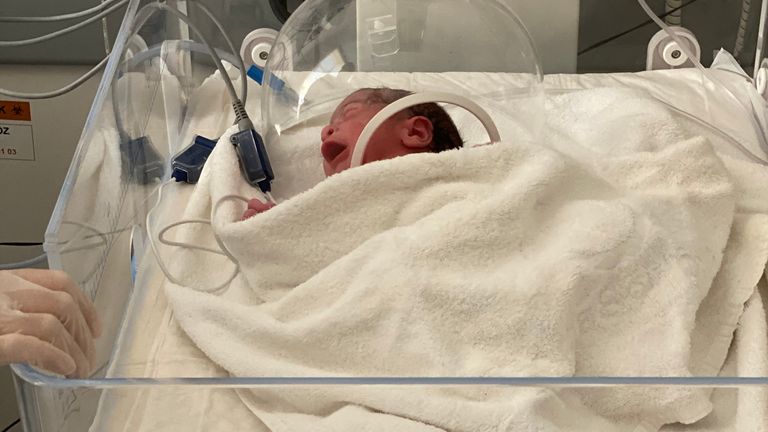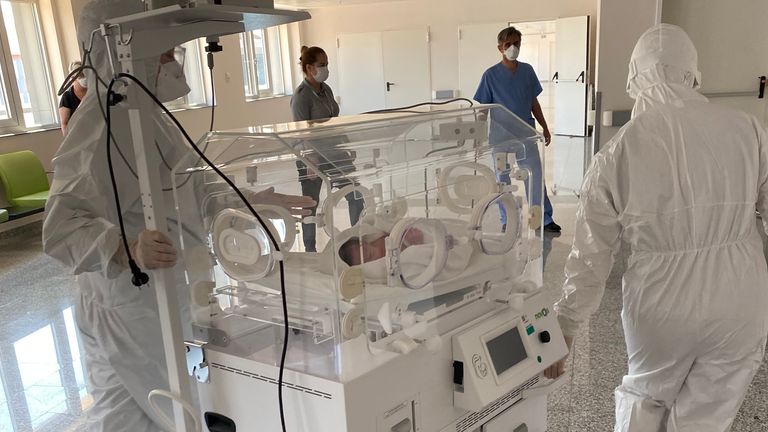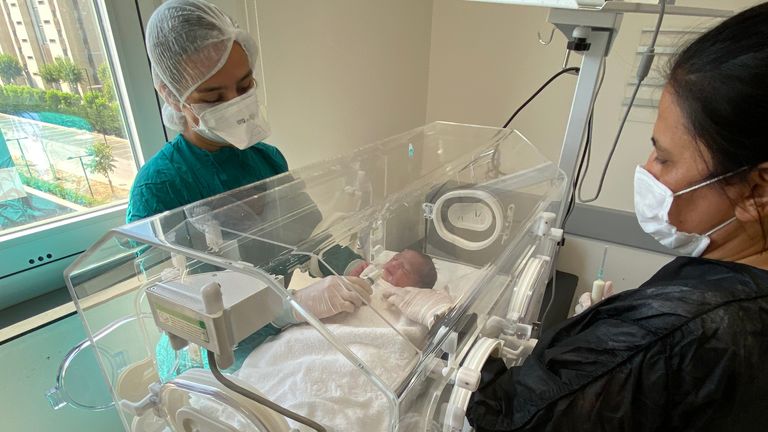Baby A is less than an hour old and already on Turkey’s pandemic risk list.
She’s whisked away by two nurses in hazmat suits for her own safety – and for theirs.
She is a rare thing – a baby born to a woman with coronavirus. Her mother, who has just given birth to her, could also cause her death.
She is the first child to a young couple who’ve spent most of the baby girl’s fetal development locked down and coping with a global killer virus pandemic.
They’ve been in the hospital for just a matter of hours and, as is standard in Istanbul, both were given PCR tests to check if they have COVID-19.
Both are positive.
The shock of being infected is only matched by the anxiety of having a baby born into a world overshadowed by a killer disease with no known cure.
The couple are immediately isolated and their new-born, the daughter they’ve been waiting nine months to see and welcome into the world and their family, is taken away from them.
The first sensation this little baby girl feels is not the comforting warmth of her mother’s body. Instead she’s given a PCR swab test to check for COVID-19. She’ll get a second within 48 hours.
She’s rushed off then to be thoroughly assessed.
This involves weighing and checking all her vital signs.
She’s having slight difficulty breathing and this is causing some alarm.
A plastic hood is placed over her head as she’s taking her first gulps of air to help her breathing.
But they’re still not completely satisfied.
It’s decided she should be moved to the hospital’s coronavirus baby ICU where she’ll be monitored 24 hours a day until she’s out of the danger zone.
The baby herself is a possible spreader and/or a possible patient – and she’ll be treated as both unless they’re certain otherwise.
At the Professor Ilhan Varank Hospital in Istanbul, they’ve had a string of mothers who’ve tested positive for coronavirus.
Some have had such mild symptoms they don’t even put it down as COVID.
But others have presented with pneumonia and by the time they give birth, they have severe breathing difficulties.
“Many (of the pregnancies) are induced early because of this,” the head of the Maternity Clinic, Associate Professor Niyazi Tug told us.
“But we have looked after them all and when we tell them we have to do this, they are happy and they even say: ‘Save the baby first’,” he says, smiling.
The hospital has a 0% mother and baby mortality rate, we’re told, and they are anxious to maintain that record.
They’ve had 33 coronavirus-positive mothers at this hospital since the start of the pandemic in Turkey.
Baby A’s mother is the 34th.
None of the babies have contracted the disease through the womb but four of them have gone on to become infected very early on.
The belief among the medical staff here is this has happened through skin-to-skin contact.
But there’s still so much to learn about the virus, no one here is taking anything for granted.
Baby A will be treated as potentially COVID-positive and examined regularly for symptoms until she has at least two negative tests in a row.
Her mother expresses breast milk for her and the baby’s ‘nurse mother’ feeds her droplets of this using a syringe while the new-born lies in her incubator, shielded from the virus-riddled world outside.
It is the closest contact the baby will have with her birth mother until she’s recovered from the virus and served her two-week quarantine period.
While we are there, the hospital staff are desperately trying to track down any relative who can look after Baby A while both her parents are recovering and in isolation.
The child’s first few hours on this earth involve only feeling human touch through plastic gloves on hands inserted through two portholes on either side of the incubator.
The life of a COVID baby is a lonely one.
Ezra Haznedaroglu is the head nurse for the Baby ICU and explains the tough but necessary decisions they have to take.
“Because there’s been no contact, we don’t think this baby will be COVID-positive,” she says. “But we will not give the baby back to the family before the mother completes her quarantine.”
Baby A’s mother is already clearly worried about making her new-born ill and now she’s able to embark on her coronavirus drug treatment, she will no longer express breastmilk.
The baby will be fed formula unless her mother is judged to no longer be a danger to her.
There are few studies yet on the effect of coronavirus on the pregnant woman or the unborn and new-born but a recent study led by the Ann and Robert H. Lurie Children’s Hospital in Chicago makes sombre reading.
The study found children younger than five years old could be hosting up to a 100 times as much of the virus in the upper respiratory tract as adults.
It is a small study and comes with huge caveats without actually confirming questions about whether children are spreaders. But all the uncertainty has meant the doctors and nurses at this Turkish hospital are not willing to take any risks.
“We have to be very careful,” Prof Tug says. “We cannot take anything for granted in these times.”




